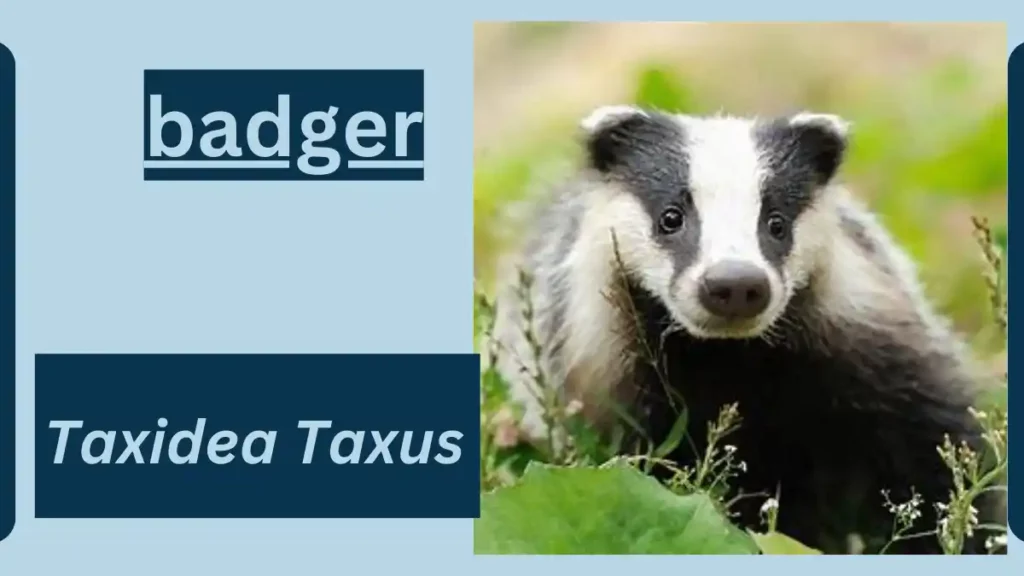Badger Animal Facts | Taxidea Taxus
October 16, 2023
The badger is a burrowing mammal known for its distinctive appearance and behavior.

Badger
Here is some information about badgers:
| Topic | Information |
| Scientific Classification | – Kingdom: Animalia |
| – Phylum: Chordata | |
| – Class: Mammalia | |
| – Order: Carnivora | |
| – Family: Mustelidae (Weasels) | |
| – Genus: Meles | |
| – Species: Various, such as the European Badger (Meles meles) and the American Badger (Taxidea taxus). | |
| Anatomy and Appearance | Physical Characteristics: Badgers have a stocky body with short legs and a distinctive black and white striped head. Their fur can vary in color depending on the species but is typically gray or brown. |
| Size: Badger species vary in size. European badgers typically weigh around 20-30 pounds (9-14 kilograms), while American badgers are smaller, weighing around 15-30 pounds (7-14 kilograms). | |
| Distribution and Habitat | Badgers are found in various parts of the world, including Europe, Asia, and North America. They prefer habitats with suitable burrowing opportunities, like woodlands, grasslands, and meadows. |
| Behavior and Lifestyle | Nocturnal: Badgers are primarily nocturnal, meaning they are active at night. They have excellent night vision. |
| Burrow Dwellers: Badgers are skilled diggers and create complex underground burrow systems, or setts, where they live and raise their young. | |
| Diet and Prey | Badgers are omnivores, with their diet consisting of a variety of foods, including earthworms, insects, small mammals, fruits, and plant material. |
| Predators and Threats | Badgers have relatively few natural predators due to their nocturnal and burrowing habits. Humans, habitat loss, and road traffic accidents pose significant threats to their populations. |
| Reproduction and Life Cycles | Badgers reproduce sexually, with females giving birth to litters of two to five cubs in the spring. The cubs are raised in the burrow and are weaned after a few months. |
| Interesting Facts and Features | Striped Face: The distinctive black and white stripes on their face are often referred to as a “badge,” which is where the name “badger” is believed to originate. |
| Relationship with Humans | Badgers have had complex interactions with humans throughout history. They are sometimes hunted for their fur and have been associated with folklore and mythology in various cultures. |
| Conservation Status and Life Today | The conservation status of badger species varies, but they face threats from habitat loss, persecution, and road mortality. Conservation efforts are in place to protect their populations and habitats. |
File Under:







Leave a Reply